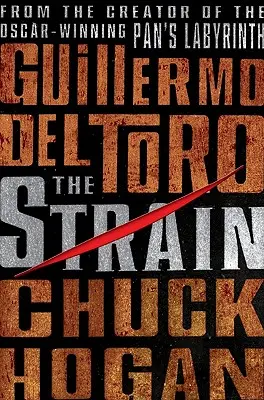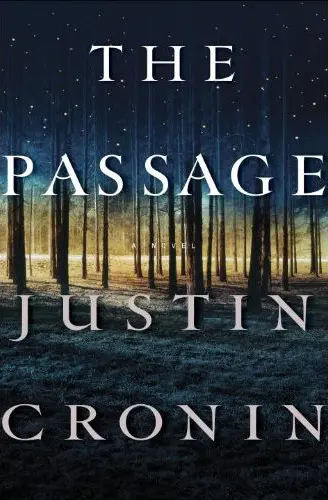Each month I throw two books, somehow related, into the BOOK BRAWL ring to fight it out for the coveted title of literary champion. Two books enter. One book leaves.
This month we’ve got the first titles in two concurrent modern vampire trilogies. Justin Cronin’s The Passage, meet Guillermo del Toro and Chuck Hogan’s The Strain. Which one sucks? Let’s find out!
Round One: By Any Other Name
The Strain (2009) signifies the vampiric virus spreading rapidly through the country—and, presumably, the strain this takes on society. It’s a solid title, but it doesn’t offer a lot of nuance.
The Passage (2010) refers to the extraordinary journey the characters take throughout this apocalyptic epic, as well as the inexorable passage of time, because the novel spans centuries. The title also implies the passage from this mortal coil to the plane of death (or vampirism). It’s pretty and it packs a punch.
Round One goes to…The Passage!
Round Two: A Book By Its Cover
I don’t actually care for either of these covers, but one is even worse than the other. The Strain cover honestly doesn’t feel like the product of much effort. It looks like an airport book, which it is--which both books are, and really, there’s nothing wrong with that. People on airplanes must read!—but I wish it didn’t look so very airporty.

The Passage cover, on the other hand, resembles nothing so much as a Christian self-help book. The sun-dappled trees breaking through the night sky and shady ground are visually clever, but with the large, cover-encompassing typeface, the entire effect is a bit mawkish. But I do feel, at least, that they tried.

Round Two goes to…The Passage!
Round Three: Does The Premise Have Promise?
The Strain opens with a Boeing 777 landing at JFK airport, when the plane suddenly stops dead in the middle of the tarmac. All the lights are dimmed, the windows shaded, the radio silent. Ephraim Goodweather, head of the CDC biological threat department, is on the case. He is led rapidly down a trail that hints at a monstrous disease, and his investigation pairs him with former professor/pawn shop owner/antique weapons dealer/Holocaust survivor/vampire slayer/all-around badass Abraham Setrakian. As they race against the rapidly spreading vampire strain, they battle the bloodsucking beasts, institutional incredulity at the CDC, and a more insidious threat of conspiracy.
The Passage has no easy summary. The novel begins with the birth of a quiet child named Amy to her transient mother. We learn of a government experiment run by a man named Wolgast, who is responsible for recruiting death row inmates to be inoculated with a mysterious virus meant to transform them into super soldiers. After Amy is left at a convent by her mother, Wolgast, who has gathered the last of the twelve inmates, is ordered to deliver Amy “No Last Name” to the Colorado compound where the inmates are undergoing astonishing changes. The twelve inmates, after fully converting to vampire form, break out and begin spreading their infection to the rest of the world. 93 years later, an isolated colony is struggling to keep the lights on and the vampires out. There, a new battle for the survival of humanity is born.
Round Three…is a draw!
Round Four: A Hero You Can Root For
Ephraim Goodweather is a brilliant scientist and a loving father. His devotion to his very important work ended his marriage, but he is on cordial, considerate terms with his ex-wife. Once he discovers the nature of the disease he is investigating, he does not waste time on skepticism. Eph simply accepts what his research has told him, and takes decisive action to prevent this terrible disease from spreading across the nation. And when it comes time for Eph to put down the microscope and take up the motherloving sword, he isn’t afraid to chop off some vamp heads.
The Passage, due to its vast scope of time and place, does not have one protagonist. Wolgast is a dedicated agent who ultimately honors his own moral code over a superior’s orders. Peter is a brave defender of his colony and loving brother. Amy…well, I can’t talk much about Amy without spoiling this wonderful novel for you, but Amy is truly amazing. Each character is tremendously compelling, and Cronin’s ability to make us care equally about someone new after robbing us of a character to whom we have grown attached is remarkable indeed.
Round Four goes to…The Passage!
Round Five: The Vampires
No one, but no one, can beat Guillermo del Toro for creature design. The man has mastered the art of conceiving stunningly horrific and original monsters for his films, and the vampires in The Strain are no different. These vamps have a “stinger”—a long, retractable proboscis beneath the tongue that can whip out over six feet from the mouth when they are feeding. The stinger both drains the prey’s blood and infects the victim with capillary worms so that they are soon infected with a rapidly spreading and incurable virus. The vampires have smooth, featureless skin; they are pale when they are hungry but tinged red when they have recently fed. They have black eyes surrounded by red, with white membranes that slide across the eyeball. Their body temperature runs at 120 degrees and they emanate heat. The vampires are extremely agile, quick, strong, nearly impervious to everything except sunlight and decapitation. The novel offers far more specific details about the physiology of these creatures, but you get the idea.
The vampires in The Passage resemble Morlocks: light-vulnerable, hairless creatures that move almost like dogs, with “clawlike hands” and “sworded teeth.” They make clicking sounds with their throats to communicate with each other. They can jump over incredible distances; they are nimble and powerful and invulnerable. There are twelve original “virals,” from the twelve original inmates, and they are nearly immortal, creating twelve enormous families of virals with a far reaching hive-mind. The virals in The Passage are extremely cool, but as I said, no one beats del Toro.
Round Five goes to…The Strain!
Round Six: What A Lovely Language
The language in The Strain is utilitarian. It’s serviceable. Guillermo del Toro is a wonderful director and screenwriter, and Chuck Hogan has written many successful novels, but the book lacks poetry.
Half-covered now by the new (and otherwise invisible) moon, the still bright sky began to take on a dusky cast; like a sunset, only without any warming of the light. At ground level, the sunlight appeared pale, as though filtered or diffused. Shadows lost their certainty. The world, it seemed, had been put on a dimmer.
The Passage is beautifully written. Cronin is not a horror writer; he is a writer, with a heart-wrenching grasp on language, and an ability to convey triumph and tragedy with his words--words that transcend the genre.
When all time ended, and the world had lost its memory, and the man that he was had receded from view like a ship sailing away, rounding the blade of the earth with his old life locked in its hold; and when the gyring stars gazed down upon nothing, and the moon in its arc no longer remembered his name, and all that remained was the great sea of hunger on which he floated forever—still, inside him, in the deepest place, was this: one year. The mountain and the turning seasons, and Amy. Amy and the Year of Zero.
Round Six goes to…The Passage!
And the Book Brawl victor is…The Passage! The crowd goes wild! While I was pleasantly surprised by both vampire novels in this oversaturated market directed at tweens, and while I am a passionate fan of Guillermo del Toro, The Passage offers a profundity, a romance that I generally do not anticipate when reading horror novels. It’s a magnificent book, and I simply cannot wait for the sequel, The Twelve, to be released this year.
What do you guys think? Do you agree with the ruling? And what other books would you like to see duke it out in the ring in the future?

About the author
Meredith is a writer, editor and brewpub owner living in Houston, Texas. Her four most commonly used words are, "The book was better."







